Abstract
Recent developments in the analysis of derived relational responding, under the rubric of relational frame theory, have brought several complex language and cognitive phenomena within the empirical reach of the experimental analysis of behavior. The current paper provides an outline of relational frame theory as a new approach to the analysis of language, cognition, and complex behavior more generally. Relational frame theory, it is argued, also provides a suitable paradigm for the analysis of a wide variety of social behavior that is mediated by language. Recent empirical evidence and theoretical interpretations are provided in support of the relational frame approach to social behavior.
Keywords: relational frame theory, relational frames, derived stimulus relations, stimulus equivalence, social behavior
Full text
PDF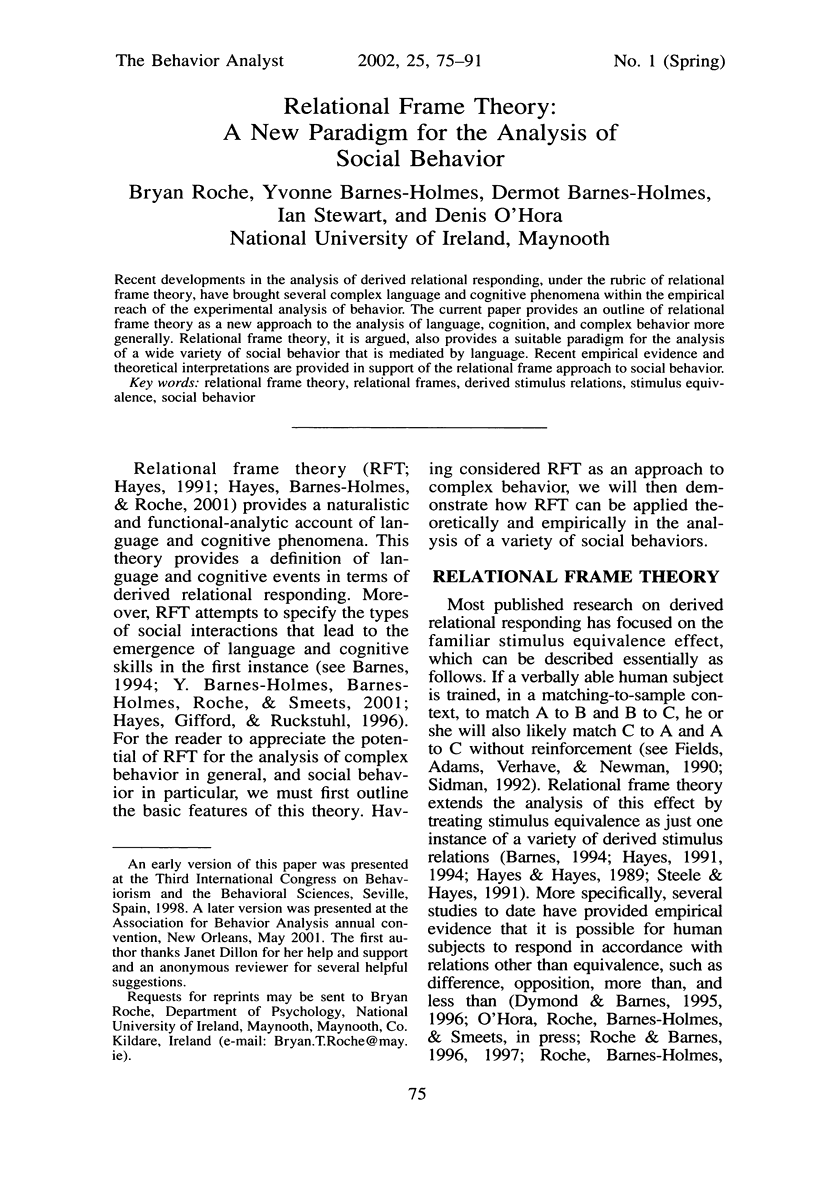
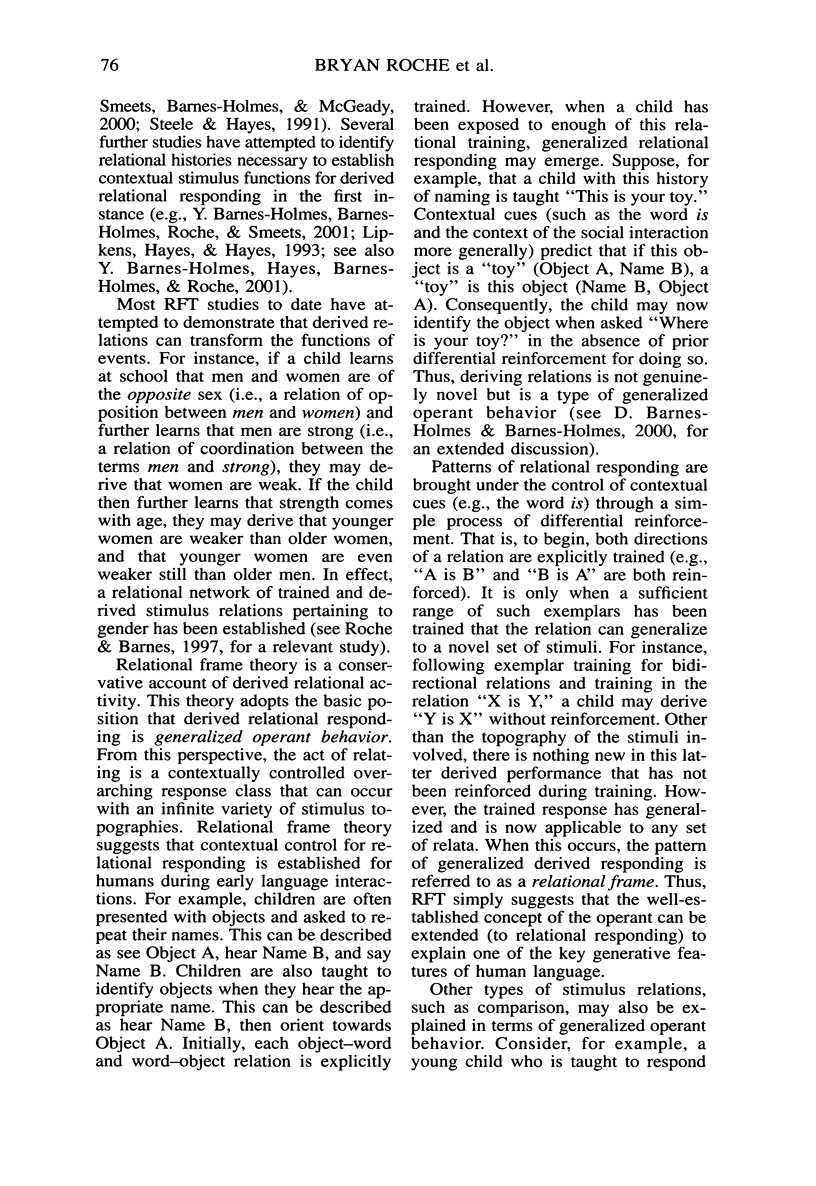

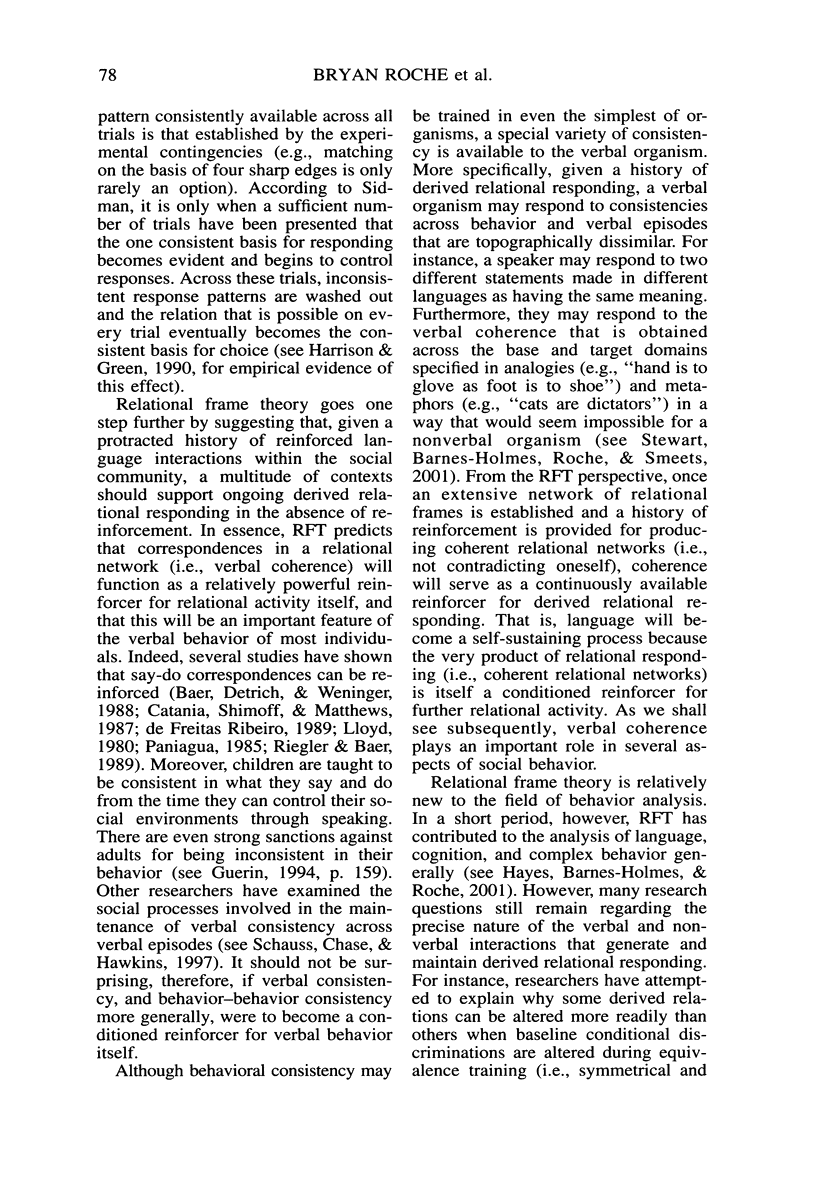
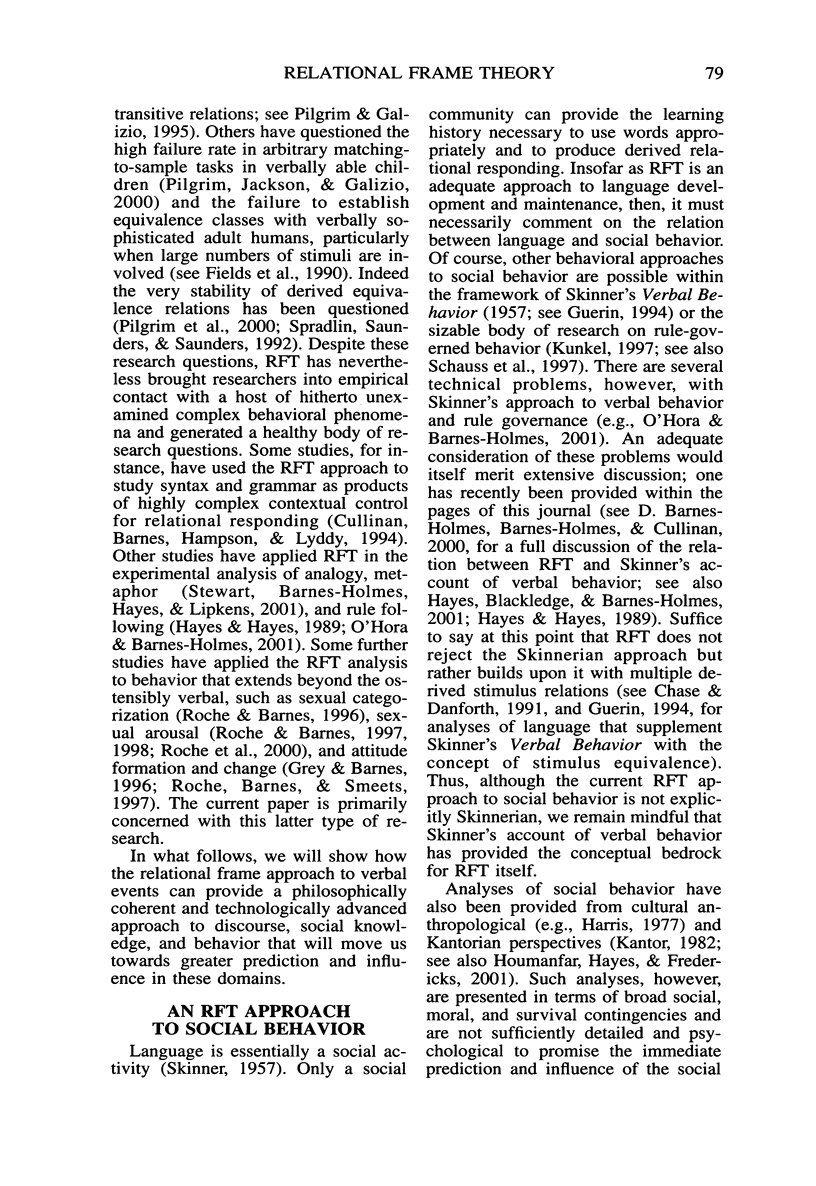
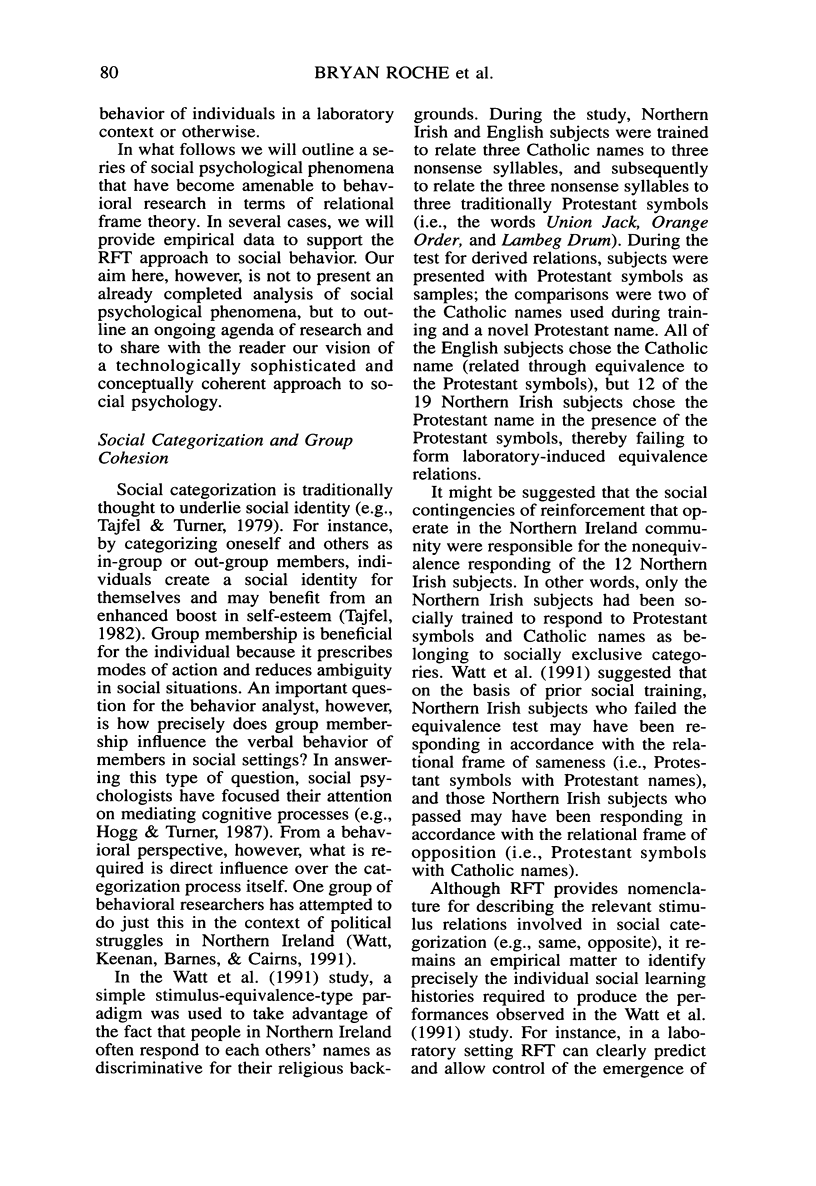

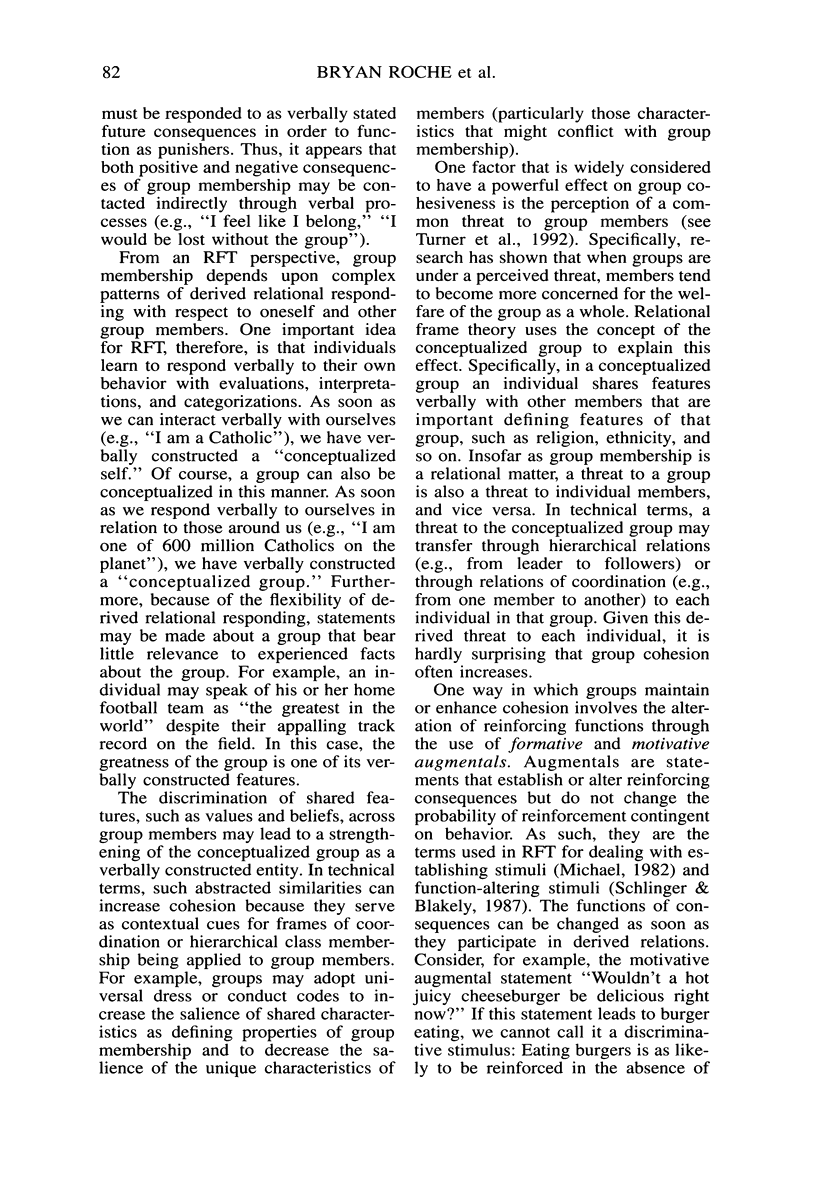
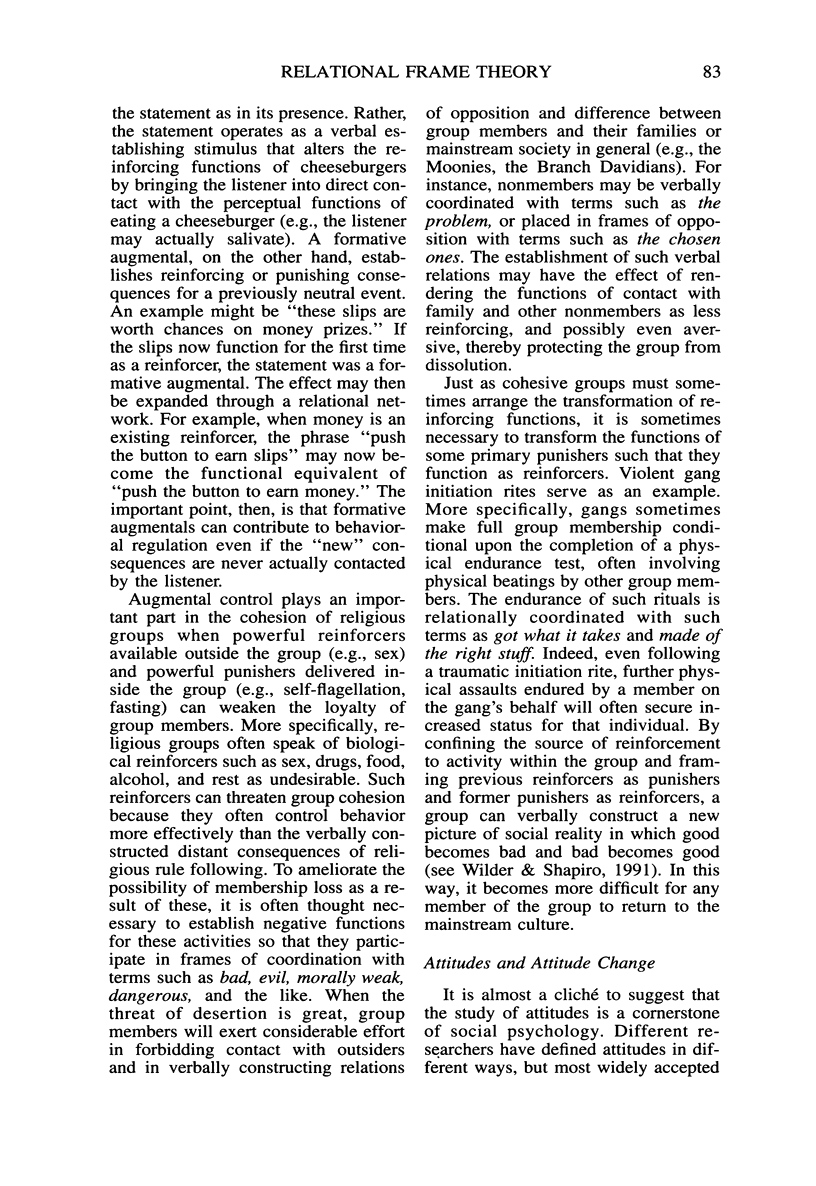
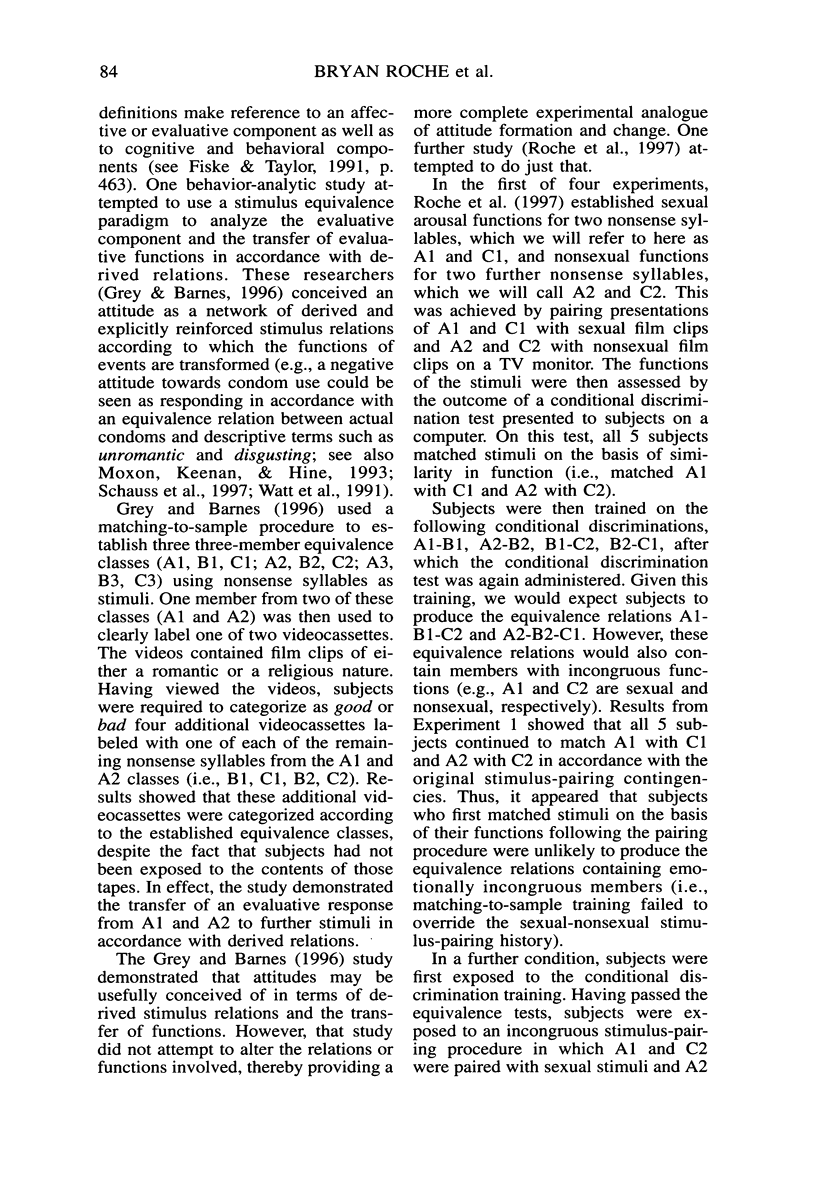
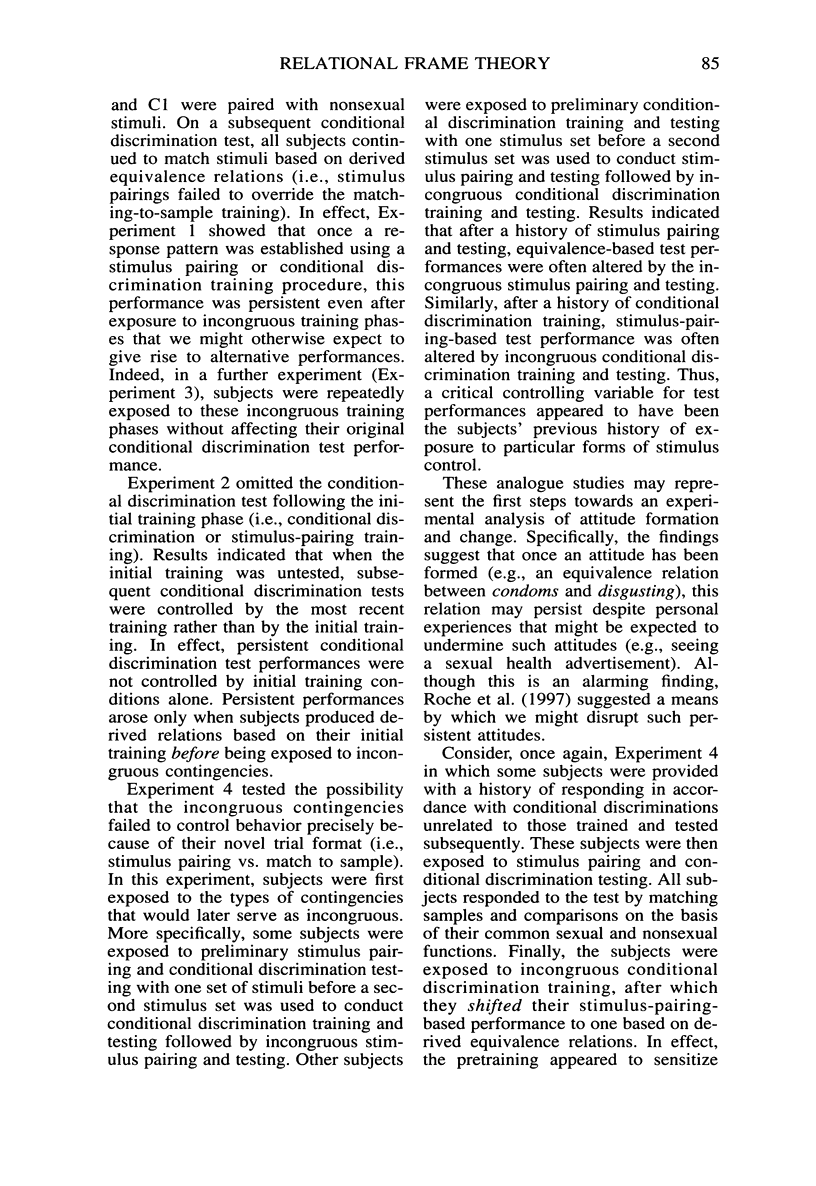
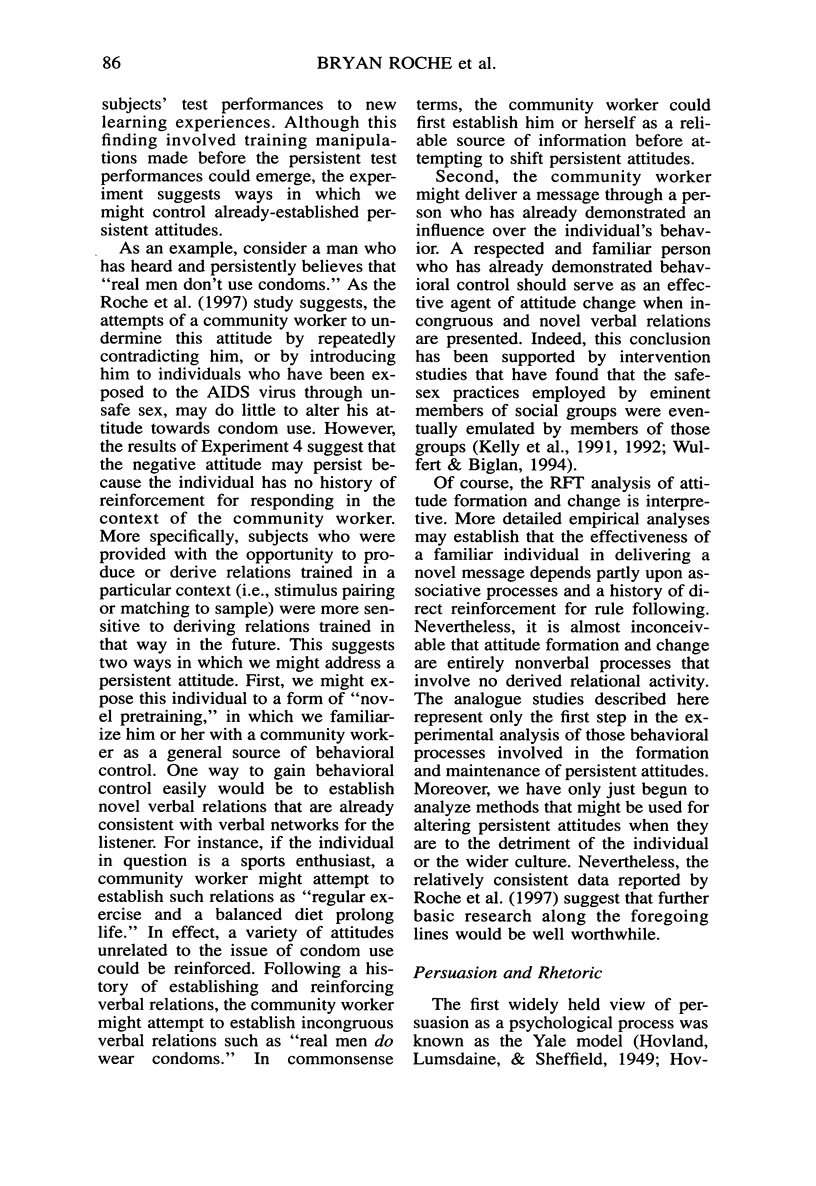
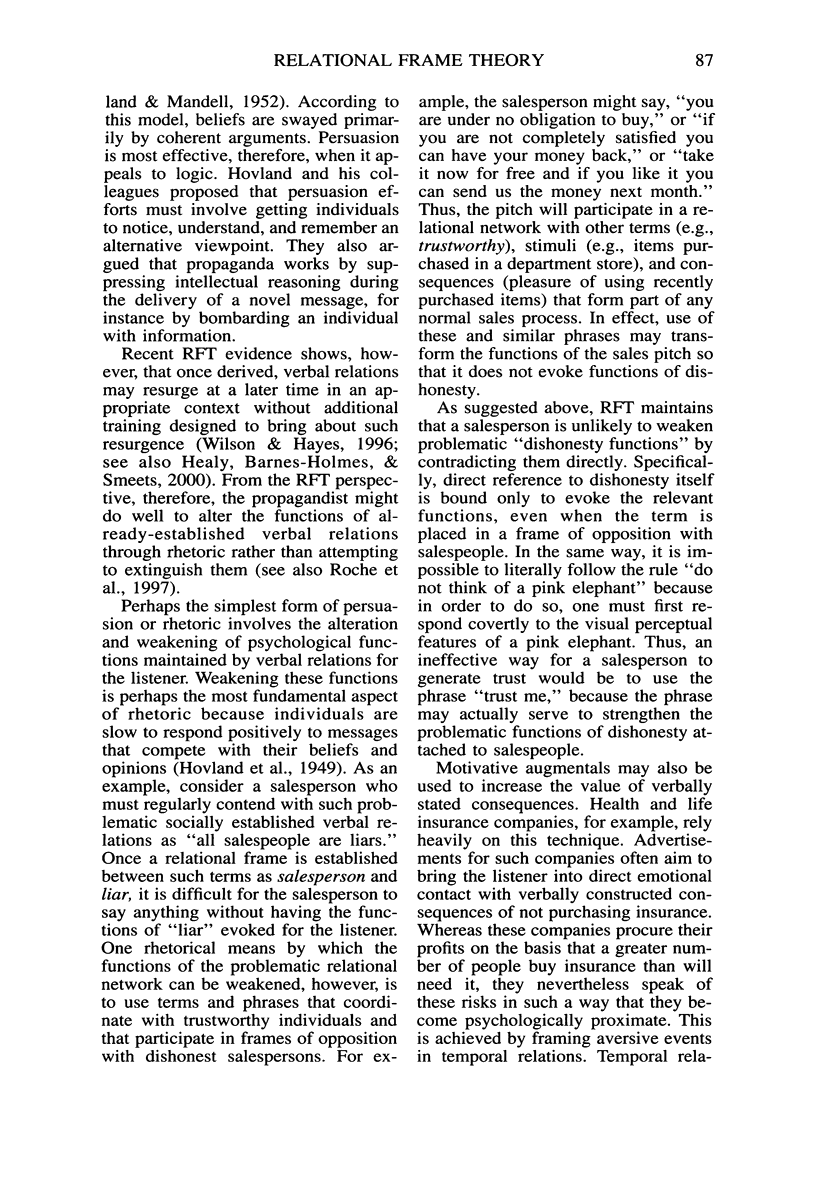
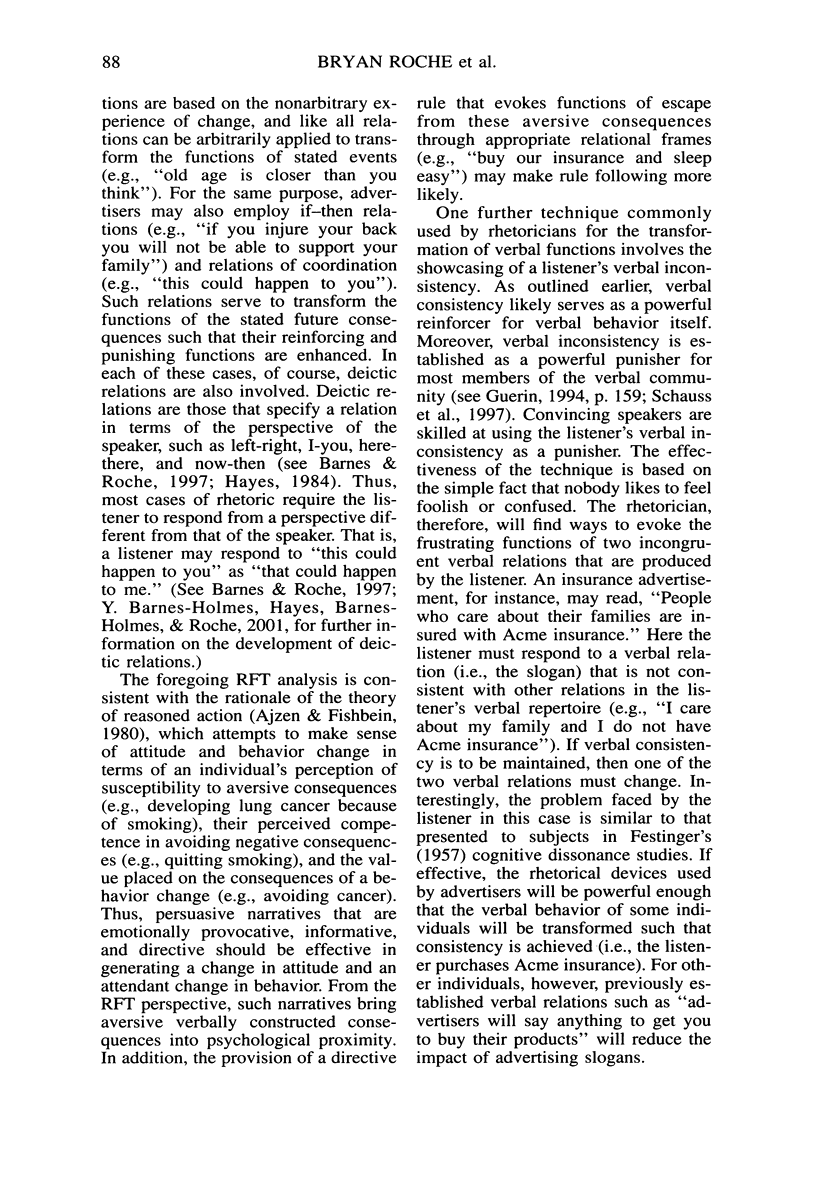
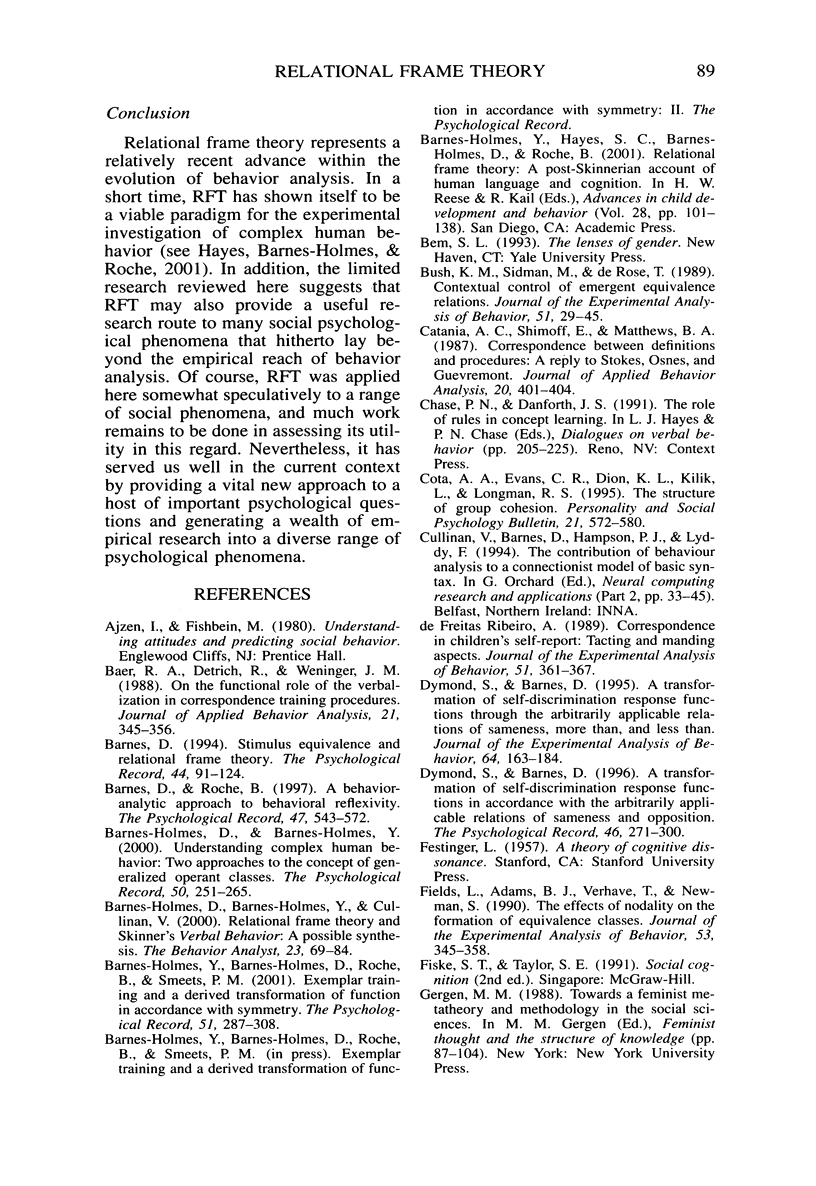
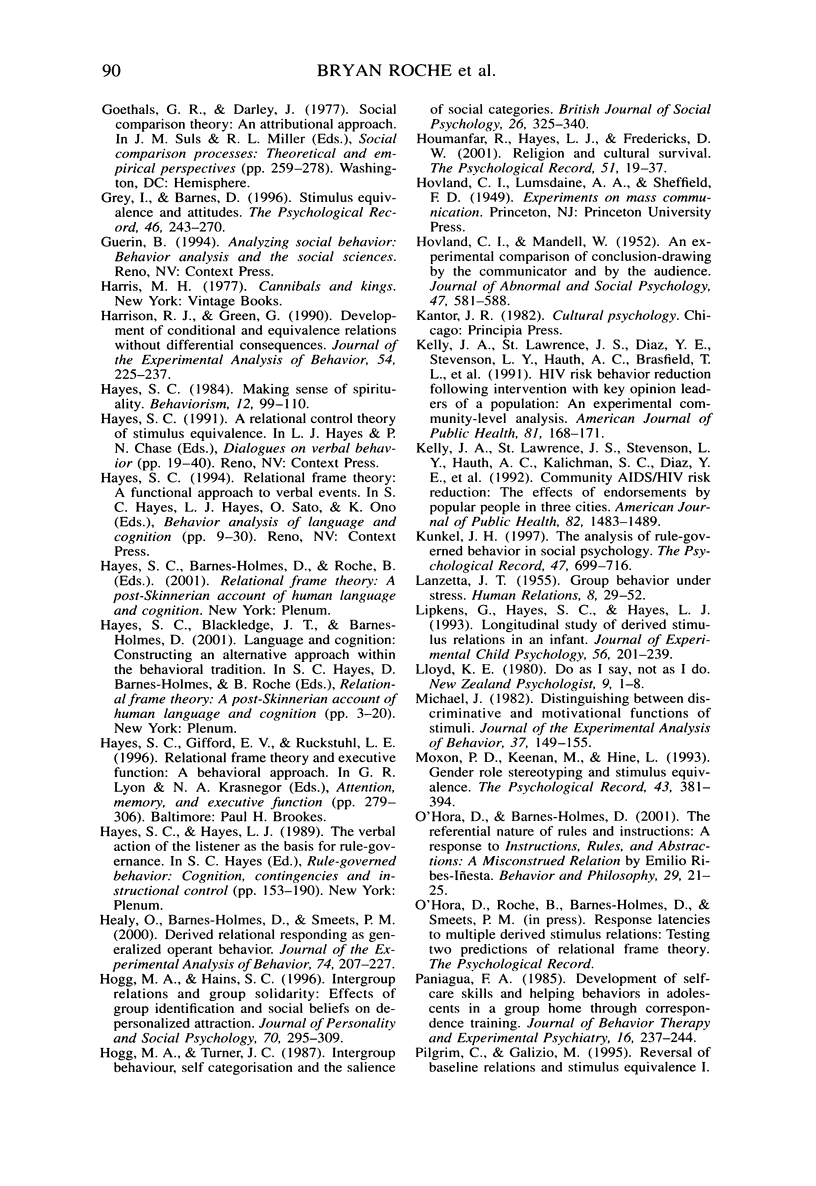
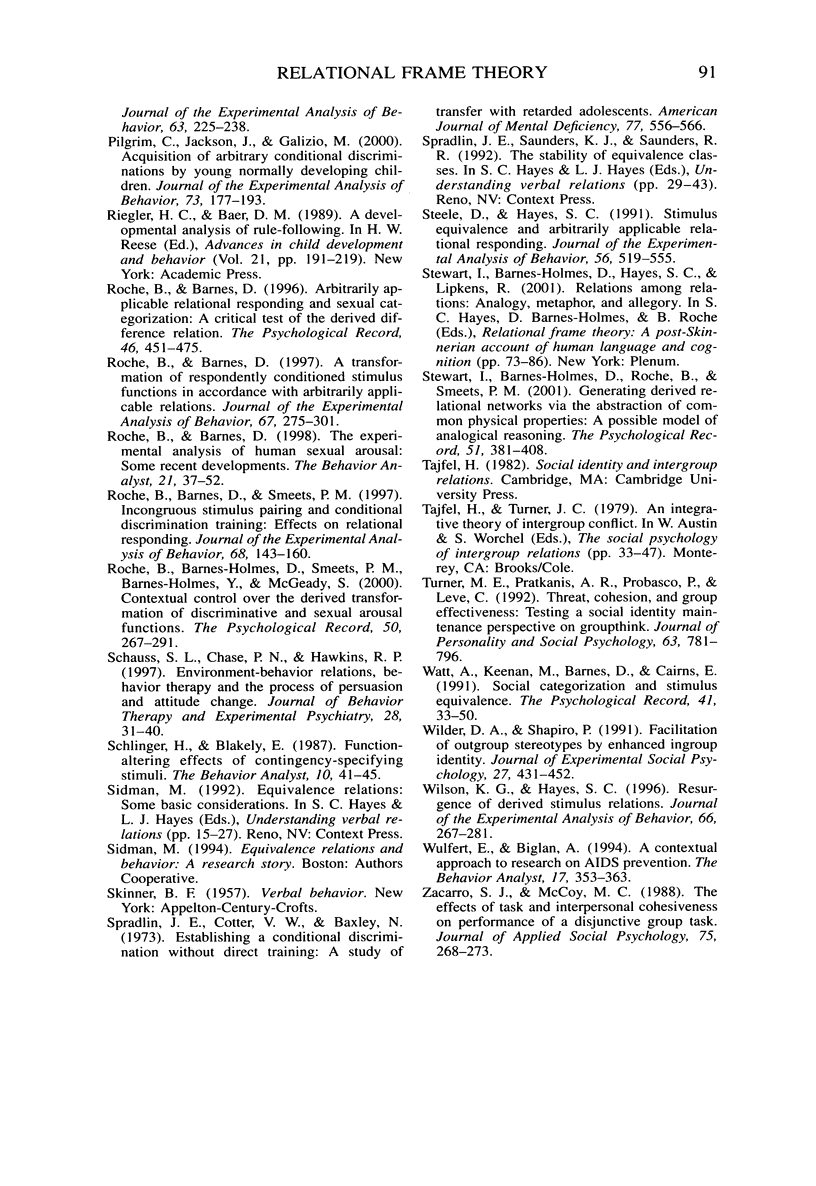
Selected References
These references are in PubMed. This may not be the complete list of references from this article.
- Baer R. A. On the functional role of the verbalization in correspondence training procedures. J Appl Behav Anal. 1988 Winter;21(4):345–356. doi: 10.1901/jaba.1988.21-345. [DOI] [PMC free article] [PubMed] [Google Scholar]
- Barnes-Holmes D., Barnes-Holmes Y., Cullinan V. Relational frame theory and Skinner's Verbal Behavior: A possible synthesis. Behav Anal. 2000 Spring;23(1):69–84. doi: 10.1007/BF03392000. [DOI] [PMC free article] [PubMed] [Google Scholar]
- Barnes-Holmes Y., Hayes S. C., Barnes-Holmes D., Roche B. Relational frame theory: a post-Skinnerian account of human language and cognition. Adv Child Dev Behav. 2001;28:101–138. doi: 10.1016/s0065-2407(02)80063-5. [DOI] [PubMed] [Google Scholar]
- Bush K. M., Sidman M., de Rose T. Contextual control of emergent equivalence relations. J Exp Anal Behav. 1989 Jan;51(1):29–45. doi: 10.1901/jeab.1989.51-29. [DOI] [PMC free article] [PubMed] [Google Scholar]
- Catania A. C., Shimoff E., Matthews B. A. Correspondence between definitions and procedures: A reply to Stokes, Osnes, and Guevremont. J Appl Behav Anal. 1987 Winter;20(4):401–404. doi: 10.1901/jaba.1987.20-401. [DOI] [PMC free article] [PubMed] [Google Scholar]
- De Freitas Ribeiro A. Correspondence in children's self-report: Tacting and manding aspects. J Exp Anal Behav. 1989 May;51(3):361–367. doi: 10.1901/jeab.1989.51-361. [DOI] [PMC free article] [PubMed] [Google Scholar]
- Dymond S., Barnes D. A transformation of self-discrimination response functions in accordance with the arbitrarily applicable relations of sameness, more than, and less than. J Exp Anal Behav. 1995 Sep;64(2):163–184. doi: 10.1901/jeab.1995.64-163. [DOI] [PMC free article] [PubMed] [Google Scholar]
- Fields L., Adams B. J., Verhave T., Newman S. The effects of nodality on the formation of equivalence classes. J Exp Anal Behav. 1990 May;53(3):345–358. doi: 10.1901/jeab.1990.53-345. [DOI] [PMC free article] [PubMed] [Google Scholar]
- HOVLAND C. I., MANDELL W. An experimental comparison of conclusion-drawing by the communicator and by the audience. J Abnorm Psychol. 1952 Jul;47(3):581–588. doi: 10.1037/h0059833. [DOI] [PubMed] [Google Scholar]
- Harrison R. J., Green G. Development of conditional and equivalence relations without differential consequences. J Exp Anal Behav. 1990 Nov;54(3):225–237. doi: 10.1901/jeab.1990.54-225. [DOI] [PMC free article] [PubMed] [Google Scholar]
- Healy O., Barnes-Holmes D., Smeets P. M. Derived relational responding as generalized operant behavior. J Exp Anal Behav. 2000 Sep;74(2):207–227. doi: 10.1901/jeab.2000.74-207. [DOI] [PMC free article] [PubMed] [Google Scholar]
- Kelly J. A., St Lawrence J. S., Diaz Y. E., Stevenson L. Y., Hauth A. C., Brasfield T. L., Kalichman S. C., Smith J. E., Andrew M. E. HIV risk behavior reduction following intervention with key opinion leaders of population: an experimental analysis. Am J Public Health. 1991 Feb;81(2):168–171. doi: 10.2105/ajph.81.2.168. [DOI] [PMC free article] [PubMed] [Google Scholar]
- Kelly J. A., St Lawrence J. S., Stevenson L. Y., Hauth A. C., Kalichman S. C., Diaz Y. E., Brasfield T. L., Koob J. J., Morgan M. G. Community AIDS/HIV risk reduction: the effects of endorsements by popular people in three cities. Am J Public Health. 1992 Nov;82(11):1483–1489. doi: 10.2105/ajph.82.11.1483. [DOI] [PMC free article] [PubMed] [Google Scholar]
- Lipkens R., Hayes S. C., Hayes L. J. Longitudinal study of the development of derived relations in an infant. J Exp Child Psychol. 1993 Oct;56(2):201–239. doi: 10.1006/jecp.1993.1032. [DOI] [PubMed] [Google Scholar]
- Michael J. Distinguishing between discriminative and motivational functions of stimuli. J Exp Anal Behav. 1982 Jan;37(1):149–155. doi: 10.1901/jeab.1982.37-149. [DOI] [PMC free article] [PubMed] [Google Scholar]
- Paniagua F. A. Development of self-care skills and helping behaviors of adolescents in a group home through correspondence training. J Behav Ther Exp Psychiatry. 1985 Sep;16(3):237–244. doi: 10.1016/0005-7916(85)90069-2. [DOI] [PubMed] [Google Scholar]
- Pilgrim C., Jackson J., Galizio M. Acquisition of arbitrary conditional discriminations by young normally developing children. J Exp Anal Behav. 2000 Mar;73(2):177–193. doi: 10.1901/jeab.2000.73-177. [DOI] [PMC free article] [PubMed] [Google Scholar]
- Riegler H. C., Baer D. M. A developmental analysis of rule-following. Adv Child Dev Behav. 1989;21:191–219. doi: 10.1016/s0065-2407(08)60287-6. [DOI] [PubMed] [Google Scholar]
- Roche B., Barnes D. A transformation of respondently conditioned stimulus function in accordance with arbitrarily applicable relations. J Exp Anal Behav. 1997 May;67(3):275–301. doi: 10.1901/jeab.1997.67-275. [DOI] [PMC free article] [PubMed] [Google Scholar]
- Roche B., Barnes D., Smeets P. Incongruous stimulus pairing and conditional discrimination training: effects on relational responding. J Exp Anal Behav. 1997 Sep;68(2):143–160. doi: 10.1901/jeab.1997.68-143. [DOI] [PMC free article] [PubMed] [Google Scholar]
- Roche B., Barnes D. The experimental analysis of human sexual arousal: Some recent developments. Behav Anal. 1998 Spring;21(1):37–52. doi: 10.1007/BF03392779. [DOI] [PMC free article] [PubMed] [Google Scholar]
- Schauss S. L., Chase P. N., Hawkins R. P. Environment-behavior relations, behavior therapy and the process of persuasion and attitude change. J Behav Ther Exp Psychiatry. 1997 Mar;28(1):31–40. doi: 10.1016/s0005-7916(96)00041-9. [DOI] [PubMed] [Google Scholar]
- Schlinger H., Blakely E. Function-altering effects of contingency-specifying stimuli. Behav Anal. 1987 Spring;10(1):41–45. doi: 10.1007/BF03392405. [DOI] [PMC free article] [PubMed] [Google Scholar]
- Spradlin J. E., Cotter V. W., Baxley N. Establishing a conditional discrimination without direct training: a study of transfer with retarded adolescents. Am J Ment Defic. 1973 Mar;77(5):556–566. [PubMed] [Google Scholar]
- Steele D., Hayes S. C. Stimulus equivalence and arbitrarily applicable relational responding. J Exp Anal Behav. 1991 Nov;56(3):519–555. doi: 10.1901/jeab.1991.56-519. [DOI] [PMC free article] [PubMed] [Google Scholar]
- Wilson K. G., Hayes S. C. Resurgence of derived stimulus relations. J Exp Anal Behav. 1996 Nov;66(3):267–281. doi: 10.1901/jeab.1996.66-267. [DOI] [PMC free article] [PubMed] [Google Scholar]
- Wulfert E., Biglan A. A contextual approach to research on AIDS prevention. Behav Anal. 1994 Fall;17(2):353–363. doi: 10.1007/BF03392681. [DOI] [PMC free article] [PubMed] [Google Scholar]


